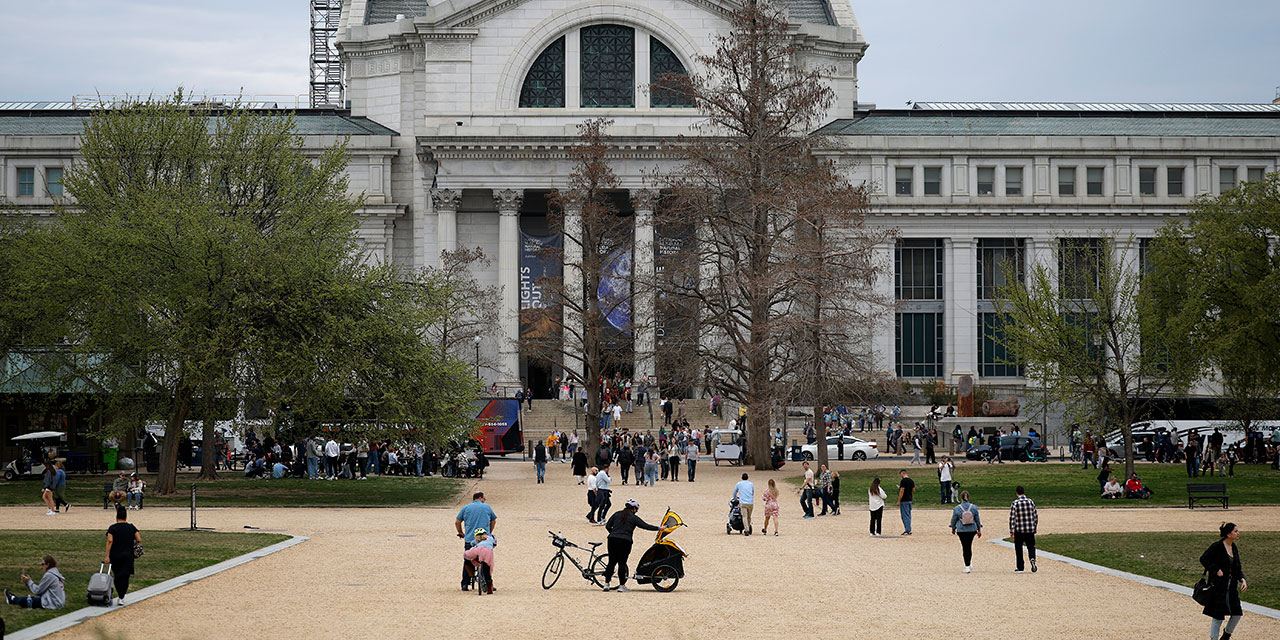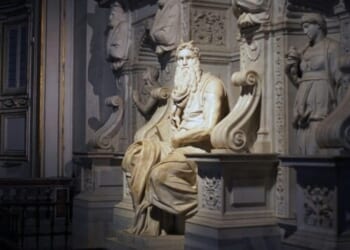
In recent years, depictions of America’s history and heroes at leading museums and monuments have increasingly reflected leftist ideology while condemning America’s past and its way of life. It’s becoming increasingly easy to tell whether an exhibit at one of the Smithsonian museums in Washington, D.C. was designed decades ago or in recent years, simply by whether its depictions are traditional, universal, and appropriately celebratory, or radical, divisive, and reflexively condemning.
At the Smithsonian’s National Museum of American History, for example, the exhibit on “The Star-Spangled Banner,” which dates to 1964, is refreshingly devoid of ideological baggage and comes across as something that would have fit in nicely at, say, the 1976 Bicentennial. By contrast, that same museum is currently traveling an exhibit that opened in 2020 called “Girlhood (It’s Complicated),” which its chief curator says incorporates thoughts “about how intersex and transgender stories illuminate and complicate ideas about girlhood and what it means to grow up female in the United States.” Not exactly Laura Ingalls Wilder’s life on the prairie.
Finally, a reason to check your email.
Sign up for our free newsletter today.
Reacting to this trend of portraying America’s history from a leftist perspective in prominent public places, President Trump recently issued an executive order calling for the Smithsonian, as well as the National Park Service, to depict American history more accurately, conventionally, and favorably. His order calls on these entities to avoid “ideological indoctrination or divisive narratives that distort” and “rewrite” America’s history and “inappropriately disparage” its heroes, and it instructs them to foster “unity” by emphasizing America’s “unparalleled legacy of advancing liberty, individual rights, and human happiness,” rather than cultivating division by portraying the nation as “inherently racist, sexist, oppressive, or otherwise irredeemably flawed.”
In response, the AP writes that “Trump’s order doesn’t mention that the founders enshrined slavery into the U.S. Constitution and declared enslaved persons as three-fifths of a person for the purpose of the Census.” Yet this is exactly the sort of ideology-fueled historical ignorance that Trump is seeking to address. In truth, the Founders were determined not to enshrine slavery in the Constitution; they refused to tarnish that document by even mentioning that term within its text. Where forced to reference the “peculiar institution” that Americans had inherited from the British and which then existed, to varying degrees, in a majority of the states, the Constitution referred to each slave as a “Person” and slaves collectively as “Persons.”
Likewise, the Constitution never said that the Census should count slaves as three-fifths of a person, and the Census never did so. The first Census, conducted in 1790, found just shy of 3.9 million people residing in the United States, including 694,280 slaves. As for the decision to grant partial credit for slaves in determining how many members of Congress each state would get, the injustice was that slaves were counted at all—thereby padding Southern representation and encouraging more slaveholding—not that they weren’t counted fully.
“Once widely respected as a symbol of American excellence and a global icon of cultural achievement,” Trump’s order reads, “the Smithsonian Institution has, in recent years, come under the influence of a divisive, race-centered ideology.” James Grossman, executive director of the American Historical Association, objects to the White House language, saying that it “egregiously misrepresents the work of the Smithsonian.” Yet the Smithsonian’s secretary and highest-ranking official, Lonnie Bunch, has stated his belief that the institution should lead the way in promoting race-conscious social activism.
“Well, I always felt that the African American Museum was 1619 before the project, and critical race theory before critical race theory was popular,” said Bunch in a 2021 interview with Episcopal priest Kelly Brown Douglas. “People trust museums,” he said, adding, “If you don’t talk about social justice, then you’re not a museum.” Apparently referring to the National Museum of African American History and Culture, which opened in 2016, Bunch said, “What I hope the museum does is inspire new generations of activists.” It was on Bunch’s watch as secretary of the Smithsonian that the museum installed, but then was forced to remove under public pressure, a chart depicting “Self-reliance,” “Objective, rational linear thinking,” and the “nuclear family” (with a father and mother) as aspects of “white culture”—or of “whiteness.”
Bunch was not merely being swept up in post-George Floyd wokeism. He had led the way down that path before 2020. A 2019 article published in the Smithsonian Magazine spoke of Bunch’s “insistence that the Smithsonian support the New York Times’ 1619 Project,” adding that “Bunch worked with [African American Museum] curator Mary Elliott on the museum’s contributions to the project and took pains to ensure the Smithsonian’s name would be publicly associated with it.” Bunch spoke of wanting the Smithsonian “to make diversity and inclusion so central that it’s no longer talked about” and “to legitimize important issues, whether it’s 1619 or climate change.”
Bunch and his left-leaning allies in the legacy media and academic history departments often suggest that the only alternative to a radical left-leaning presentation of history is a simplistic and one-dimensional one. Right on cue, in response to Trump’s order, Bunch said that the Smithsonian will “remain committed to telling the multi-faceted stories of this country’s extraordinary heritage.” In truth, it is Bunch’s approach that lacks nuance and historical context, as it views everything through a present-day lens tinted with faddish academic obsessions about race. As a result, much is missed, and America’s glorious history is shortchanged. But Bunch apparently considers this a small price to pay to inspire a new generation of activists.
Trump cannot remove Bunch from his post. The Smithsonian is not a part of the executive branch, and its secretary’s appointment is controlled by a board of regents. But more than three-fifths of the Smithsonian’s funding comes from Americans’ tax dollars, so it’s appropriate for Trump to weigh in on its activities. This is especially true with the nation’s Quarter-Millennial anniversary on the horizon—an occasion that should be celebrated like the Bicentennial, not largely ignored (as it has mostly been so far) or, worse, treated as another opportunity to condemn the United States.
Reclaiming our museums and monuments so that they are once again worthy of our history will be a long, arduous process. Trump’s executive order is an important step in that direction.
Photo by Kevin Dietsch/Getty Images News via Getty Images
Source link

















